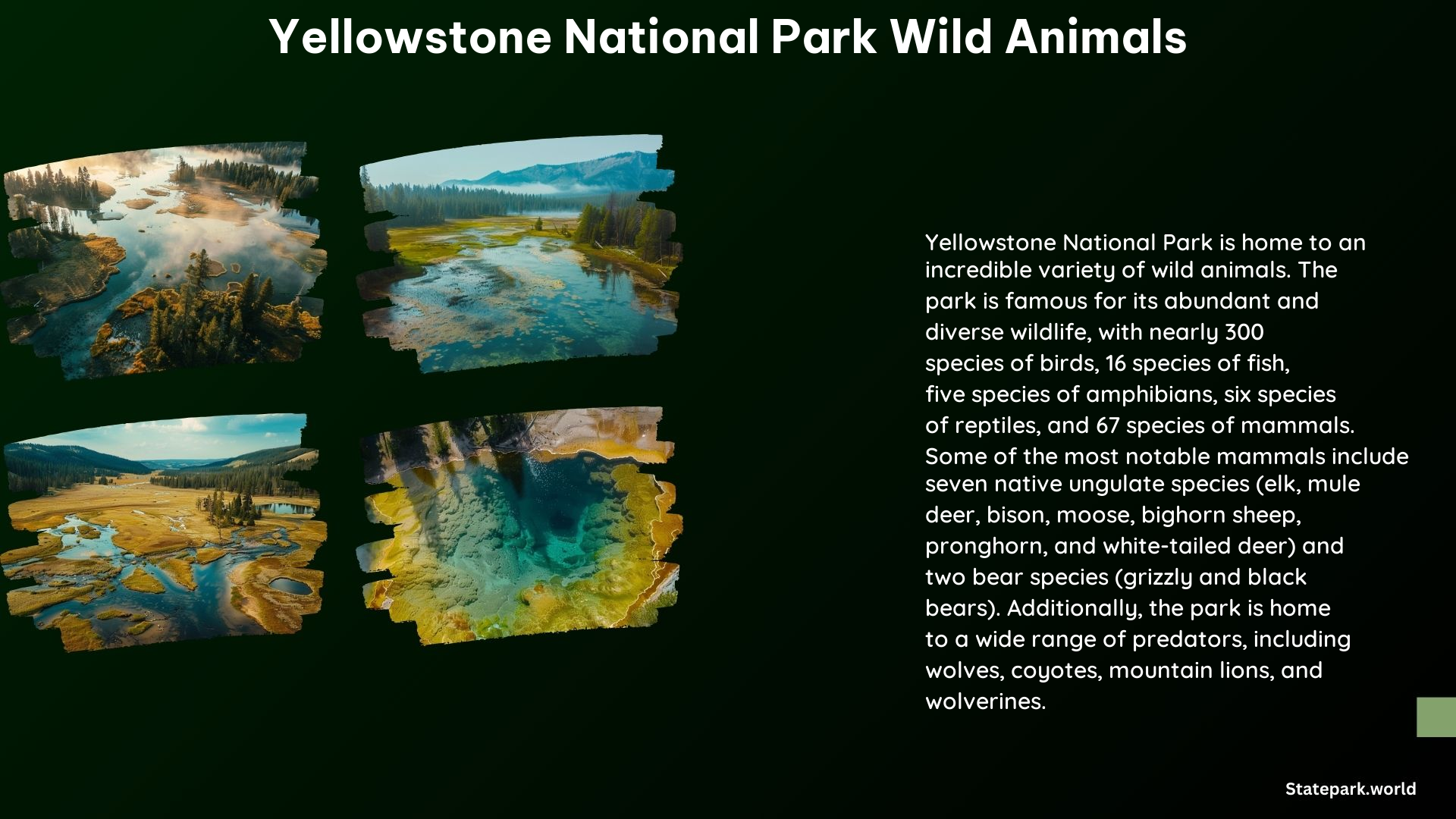Yellowstone National Park is renowned for its diverse and abundant wildlife, including a wide range of large mammals, birds, and other species. From the iconic bison and grizzly bears to the elusive wolves and majestic elk, the park offers a unique opportunity to observe and appreciate the natural wonders of the American West.
Safety Guidelines for Observing Wildlife
When visiting Yellowstone National Park, it is essential to follow a set of safety guidelines to ensure the well-being of both visitors and wildlife. These guidelines include:
- Maintain a Safe Distance: Keep at least 100 yards (91 meters) away from bears and wolves, and at least 25 yards (23 meters) away from other wildlife.
- Use Binoculars or Telephoto Lenses: For safe viewing and to avoid disturbing wildlife.
- Stay in Roadside Pullouts: Use designated pullouts when viewing wildlife to avoid blocking traffic and to ensure your safety.
- Do Not Approach or Feed Wildlife: It is illegal to willfully remain near or approach wildlife, including birds, within any distance that disturbs or displaces the animal.
Large Mammals in Yellowstone

Yellowstone National Park is home to a diverse array of large mammals, each with its own unique characteristics and behaviors. Some of the most notable species include:
- Elk: The most abundant large mammal in Yellowstone, with summer herd sizes reaching up to 10,000-20,000. Elk bulls are known for their impressive antlers, which can grow up to 6 feet wide and weigh 30 pounds.
- Bison: Yellowstone is home to the nation’s largest remaining bison population on public land. Males can weigh up to 2,000 pounds and females up to 1,000 pounds.
- Grizzly Bears: One of the two bear species in Yellowstone, grizzly bears are known for their aggressive behavior when defending their young or food.
- Wolves: Yellowstone is home to several wolf packs, with an average pack size of 10. Wolves are highly social and can live up to 1-2 years longer within the park due to conservation efforts.
- Moose: The tallest members of the deer family, moose are known for their long legs, which allow them to wade in rivers and deep snow. They consume an average of 26 pounds of food per day.
Other Wildlife in Yellowstone
In addition to the large mammals, Yellowstone National Park is home to a diverse array of other wildlife, including:
- Birds: Yellowstone is home to nearly 300 species of birds, including bald eagles, osprey, and sandhill cranes.
- Rodents: The park has a variety of rodents, including beavers, golden-mantled ground squirrels, and least chipmunks, which play a vital role in the ecosystem.
- Bats: Yellowstone is home to 13 species of bats, which are the only mammals capable of sustained flight.
Best Places to Spot Wildlife in Yellowstone
Yellowstone National Park offers several prime locations for wildlife viewing, including:
- Lamar Valley: Known for its wide-open meadows and grasslands, Lamar Valley is an ideal spot for viewing bison, elk, bears, moose, wolves, and bighorn sheep.
- Hayden Valley: This valley is home to a variety of wildlife, including bison, elk, deer, bears, wolves, and bald eagles.
- Mammoth Hot Springs: A popular spot for viewing elk, especially during the “rut” or mating season.
Best Times to Visit Yellowstone for Wildlife Viewing
The best times to visit Yellowstone National Park for wildlife viewing are:
- Spring: A great time to see bears emerging from hibernation and birds migrating back to the park.
- Early Morning and Evening: Animals tend to be more active during these times, making them ideal for viewing.
- Winter: A good time to spot wolves, as they are more visible on a snowy landscape.
Additional Resources
For more information on Yellowstone National Park’s wildlife and how to best experience it, consider the following resources:
- National Park Service (NPS) Website: For detailed information on Yellowstone’s wildlife, including safety guidelines and species information.
- Destination Yellowstone: Offers guided tours and information on the park’s wildlife, including birds and mammals.
- Yellowstone National Park Lodges: Provides information on the park’s wildlife, including guided tours and viewing tips.
References:
– National Park Service. (2024). Mammals – Yellowstone National Park. Retrieved from https://www.nps.gov/yell/learn/nature/mammals.htm
– Destination Yellowstone. (n.d.). Wildlife of Yellowstone. Retrieved from https://destinationyellowstone.com/wildlife-of-yellowstone/
– Yellowstone National Park Lodges. (2023). 10 Animals You May (or May Not) See in Yellowstone. Retrieved from https://www.yellowstonenationalparklodges.com/connect/yellowstone-hot-spot/ten-animals-you-may-or-may-not-see-in-yellowstone/
– National Park Service. (2024). Wildlife – Yellowstone National Park (U.S. National Park Service). Retrieved from https://www.nps.gov/yell/learn/nature/wildlife.htm
– National Park Service. (2024). Watch Wildlife – Yellowstone National Park (U.S. National Park Service). Retrieved from https://www.nps.gov/yell/planyourvisit/viewanim.htm
